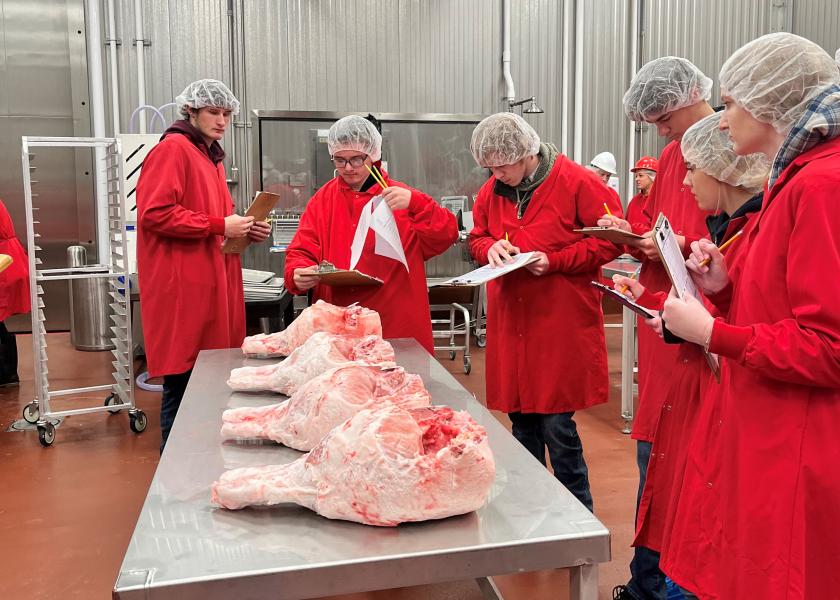Wisconsin Begins High School Meat Science Curriculum

The University of Wisconsin-River Falls (UWRF) and the Wisconsin Department of Agriculture, Trade and Consumer Protection (DATCP) recently announced the development of a high school meat science curriculum to create awareness of opportunities in and attract students to careers in the meat industry.
The project is funded by the Meat Talent Development Program, a $5 million program created by Gov. Tony Evers to strengthen the state's meat processing supply chain and workforce. DATCP Secretary Randy Romanski joined UWRF administrators and faculty on campus September 16 to make the announcement.
“This talent development program represents a significant investment in a major agricultural industry in Wisconsin, and demonstrates another meaningful collaboration between DATCP and UWRF”, said Dale Gallenberg, Dean of the College of Agriculture, Food and Environmental Sciences.
“Development of curriculum, considering and assembling the tools that are needed for effective delivery, and offering an avenue for high school agricultural instructors to acquire these materials is a ‘win-win’ scenario for all involved,” said Steve Kelm, Chair of the Animal and Food Science Department.
“Wisconsin’s strong meat industry relies on a dedicated workforce,” said DATCP Secretary Randy Romanski. “This new curriculum will serve as not only a vital tool for teaching high school students about another important sector of Wisconsin agriculture, but also help position meat industry jobs as a potential career path for these students to pursue after graduation.”
Kurt Vogel, associate professor of animal science and director of the animal welfare lab on campus is the project director. He described how the idea developed from a group conversation involving multiple University of Wisconsin campuses and DATCP, and how that initial conversation brought together the team at UWRF that prepared the proposal.
Vogel went on to say, “For many of us, this is a project that has substantial meaning because we found our ways to our current careers through meat industry-related opportunities and experiences. It is an honor and a privilege to help provide that spark for the next generation.”
Hannah Olsen, a graduate student working under Vogel in the Animal Welfare Lab is a key player in this project.
“I realized from my experiences in the classroom, both as a student and then as a teacher, that this program will have the ability to provide students and teachers with content not previously available.”
With the guidance of the agriculture education faculty at UWRF, the modules being developed will meet state and national educational content standards. The comprehensive curriculum will include lesson plans, slide decks, worksheets, quizzes and two lab exercises. High schools will be able to apply for a kit that includes basic meat processing equipment.
When Jim Graham, professor of agricultural education shared information about this initiative with a few teachers the response was very favorable. Kally Koch, the agriculture education teacher at the Riverdale School District in Muscoda said she was able to develop a meat science unit for her students because she had family members with degrees in meat cutting. She knows of other instructors who are looking for this information.
“This will be a great program to help teachers who are new to teaching or new to meat science and would also provide additional support for those already teaching meat science to improve their curriculum.”
David Kruse, the agriscience teacher at the Elkhorn School District summed up the need upon learning of the project from Graham.
“The last two years have highlighted the importance of the meat processing industry in Wisconsin and across the country. Efforts of high school agricultural education programs to help create student interest in the meat industry, to provide safe and high-quality meat products for consumers, is an important part of helping the industry develop a stronger labor pool.”







